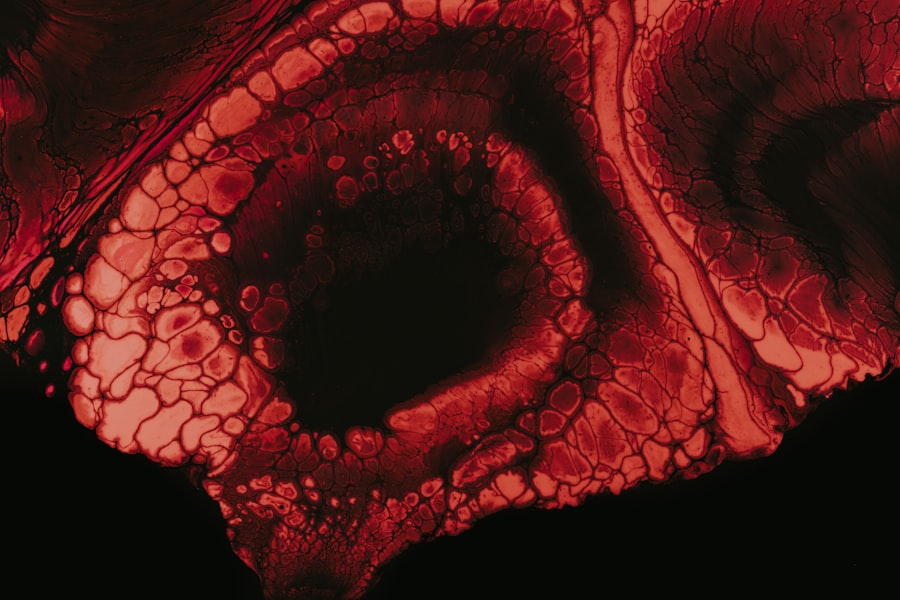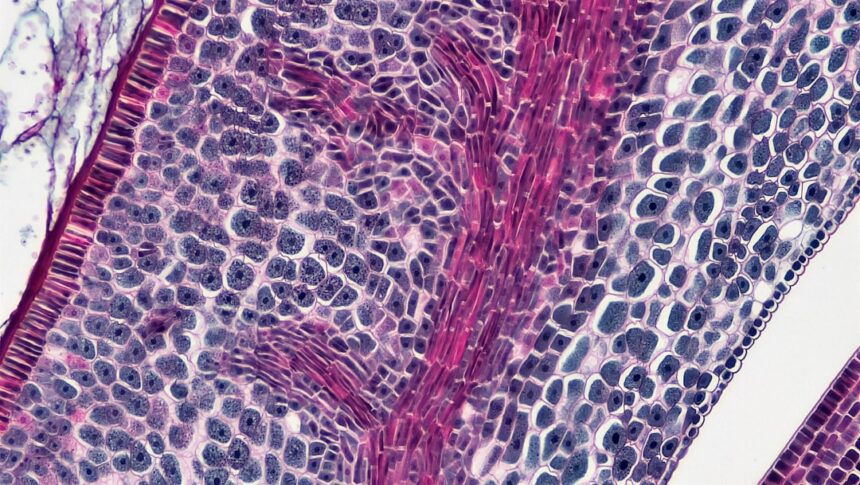The suprachiasmatic nucleus (SCN) is a small but powerful cluster of neurons located in the hypothalamus, just above the optic chiasm.
Understanding the SCN is essential for grasping how your body synchronizes with the external environment, particularly in relation to light and darkness.
As you delve deeper into the functions of the SCN, you will discover its profound influence on your overall health and well-being. The significance of the SCN extends beyond mere timekeeping; it serves as a central hub for processing environmental cues and orchestrating a multitude of biological functions. The intricate network of connections that the SCN maintains with other brain regions and peripheral organs highlights its role as a coordinator of your body’s internal clock.
By regulating hormone release, body temperature, and even metabolism, the SCN ensures that your physiological processes align with the day-night cycle, ultimately promoting optimal functioning and health.
Key Takeaways
- The suprachiasmatic nucleus (SCN) is a small region of the brain that plays a crucial role in regulating circadian rhythms.
- Light is a key influencer of the SCN, helping to synchronize the body’s internal clock with the external environment.
- The SCN has a direct impact on sleep patterns and the regulation of hormones such as melatonin and cortisol.
- Imbalances in the SCN have been linked to mental health disorders and disruptions in mood and cognition.
- Ongoing research on the SCN offers potential for new therapies and treatments to address circadian rhythm disorders and related health issues.
The Role of the Suprachiasmatic Nucleus in Circadian Rhythms
At the heart of your circadian rhythms lies the suprachiasmatic nucleus, which operates on a roughly 24-hour cycle. This internal clock is not merely a passive observer; it actively influences various biological processes, including sleep patterns, feeding behaviors, and hormone secretion. The SCN receives direct input from light-sensitive retinal ganglion cells, allowing it to adjust your circadian rhythms in response to changes in light exposure.
This remarkable ability to synchronize with environmental cues is what enables you to feel awake during the day and sleepy at night. The SCN’s role in circadian rhythms is further underscored by its ability to generate rhythmic electrical activity. Neurons within the SCN exhibit oscillatory firing patterns that are synchronized with the light-dark cycle.
This rhythmic activity is crucial for maintaining the timing of various physiological processes throughout your body. When the SCN is functioning optimally, it ensures that your internal clock remains aligned with the external world, promoting a sense of alertness during daylight hours and facilitating restorative sleep at night.
How Light Influences the Suprachiasmatic Nucleus

Light serves as the primary cue for regulating the activity of the suprachiasmatic nucleus. When light enters your eyes, it is detected by specialized photoreceptors known as intrinsically photosensitive retinal ganglion cells (ipRGCs). These cells transmit signals directly to the SCN, informing it about the presence or absence of light in your environment.
This process is crucial for adjusting your circadian rhythms and ensuring that they remain in sync with the natural day-night cycle. The influence of light on the SCN is not limited to mere signaling; it also involves complex biochemical processes. Exposure to bright light during the day promotes the release of neurotransmitters such as glutamate, which activate signaling pathways within the SCN.
This activation leads to changes in gene expression that help reinforce the circadian rhythm. Conversely, exposure to dim light or darkness at night triggers a different set of responses, allowing your body to prepare for sleep. Understanding how light impacts the SCN can empower you to make lifestyle choices that enhance your well-being, such as optimizing your exposure to natural light during the day.
The Connection Between the Suprachiasmatic Nucleus and Sleep
| Metrics | Findings |
|---|---|
| Location of Suprachiasmatic Nucleus (SCN) | Located in the hypothalamus, above the optic chiasm |
| Role in Circadian Rhythms | Regulates the body’s internal clock and the sleep-wake cycle |
| Light Input | Receives direct input from the retina, helping to synchronize the body’s clock with the external environment |
| Neurotransmitters | Uses neurotransmitters like serotonin and dopamine to regulate sleep and wakefulness |
| Disruption of SCN | Can lead to sleep disorders, jet lag, and other circadian rhythm disturbances |
The relationship between the suprachiasmatic nucleus and sleep is intricate and multifaceted. As the master clock of your body, the SCN plays a crucial role in regulating sleep-wake cycles by signaling when it’s time to be awake and when it’s time to rest. It does this by influencing the production of melatonin, a hormone that promotes sleepiness.
When darkness falls, the SCN signals the pineal gland to release melatonin into your bloodstream, helping you feel drowsy and ready for sleep. Moreover, disruptions to the SCN can lead to significant sleep disturbances. For instance, irregular sleep patterns or exposure to artificial light at night can confuse your internal clock, resulting in insomnia or other sleep disorders.
By understanding this connection, you can take proactive steps to improve your sleep hygiene. Establishing a consistent sleep schedule, minimizing screen time before bed, and creating a dark sleeping environment can all help support the natural rhythms governed by your SCN.
The Impact of the Suprachiasmatic Nucleus on Hormonal Regulation
The suprachiasmatic nucleus does not only regulate sleep; it also plays a vital role in hormonal regulation throughout your body. The SCN influences various hormones that are critical for maintaining homeostasis and overall health. For example, it regulates cortisol levels, which are essential for managing stress and energy levels throughout the day.
Cortisol typically peaks in the early morning, helping you feel alert and ready to face the day, while its levels gradually decline as evening approaches. In addition to cortisol, the SCN also affects other hormones such as growth hormone and insulin. The timing of hormone release is crucial for metabolic processes and overall well-being.
When your circadian rhythms are disrupted—whether due to shift work, travel across time zones, or irregular sleep patterns—hormonal imbalances can occur. These imbalances may lead to weight gain, increased stress levels, and other health issues. By recognizing how the SCN influences hormonal regulation, you can make informed choices that promote hormonal balance and overall health.
The Suprachiasmatic Nucleus and its Relationship to Mental Health

The suprachiasmatic nucleus has far-reaching implications for mental health as well. Research has shown that disruptions in circadian rhythms can contribute to various mental health disorders, including depression and anxiety. When your internal clock is out of sync with external cues, it can lead to mood disturbances and cognitive impairments.
For instance, individuals with seasonal affective disorder (SAD) often experience depressive symptoms during winter months when daylight hours are shorter. Furthermore, studies have indicated that maintaining a regular sleep schedule can have positive effects on mental health. By supporting the natural rhythms governed by your SCN, you may experience improved mood stability and cognitive function.
Disorders and Dysfunctions of the Suprachiasmatic Nucleus
Despite its critical role in maintaining circadian rhythms and overall health, dysfunctions of the suprachiasmatic nucleus can lead to various disorders. Circadian rhythm sleep disorders are among the most common issues associated with SCN dysfunction. These disorders can manifest as insomnia, delayed sleep phase syndrome, or advanced sleep phase syndrome, each characterized by disruptions in normal sleep patterns.
Additionally, research has linked SCN dysfunction to more severe conditions such as bipolar disorder and schizophrenia. In these cases, irregularities in circadian rhythms may exacerbate symptoms or contribute to mood instability. Understanding these connections highlights the importance of addressing circadian rhythm disruptions as part of a comprehensive approach to mental health treatment.
Research and Studies on the Suprachiasmatic Nucleus
Ongoing research continues to shed light on the complexities of the suprachiasmatic nucleus and its impact on human health. Scientists are exploring various aspects of how this master clock operates, including its molecular mechanisms and interactions with other brain regions. Studies utilizing advanced imaging techniques have provided insights into how neuronal activity within the SCN correlates with behavioral patterns.
Moreover, researchers are investigating potential therapeutic interventions targeting the SCN to address circadian rhythm-related disorders. For instance, chronotherapy—timing treatments according to an individual’s circadian rhythms—has shown promise in improving outcomes for conditions such as depression and insomnia. As our understanding of the SCN deepens, new avenues for treatment may emerge that harness its power for better health outcomes.
Potential Therapies and Treatments Targeting the Suprachiasmatic Nucleus
Given its central role in regulating circadian rhythms and overall health, targeting the suprachiasmatic nucleus presents exciting possibilities for therapeutic interventions. Light therapy is one such approach that has gained traction in recent years. By exposing individuals to bright light at specific times of day, clinicians can help reset their internal clocks and alleviate symptoms associated with seasonal affective disorder or other circadian rhythm disruptions.
Additionally, pharmacological interventions aimed at modulating melatonin levels or influencing neurotransmitter activity within the SCN are being explored as potential treatments for sleep disorders and mood disturbances. These therapies could offer new hope for individuals struggling with conditions linked to circadian rhythm dysfunctions.
The Future of Understanding and Harnessing the Power of the Suprachiasmatic Nucleus
As research into the suprachiasmatic nucleus continues to evolve, there is great potential for harnessing its power to improve health outcomes across various domains. Advances in technology may allow for more precise monitoring of circadian rhythms in real-time, enabling personalized interventions tailored to individual needs. This could revolutionize how we approach sleep disorders, mental health treatment, and even metabolic conditions.
Furthermore, interdisciplinary collaborations between neuroscientists, psychologists, and healthcare providers will be essential in translating research findings into practical applications. By integrating knowledge from various fields, we can develop comprehensive strategies that promote healthy circadian rhythms and enhance overall well-being.
Conclusion and Implications for Health and Well-being
In conclusion, understanding the suprachiasmatic nucleus is crucial for appreciating its profound impact on your health and well-being. As your body’s master clock, it regulates circadian rhythms that influence sleep patterns, hormonal balance, mental health, and more. By recognizing how light exposure affects this tiny yet powerful structure, you can make informed choices that support your internal clock.
As research continues to uncover new insights into the SCN’s functions and potential therapeutic interventions targeting it emerge, there is hope for improving health outcomes related to circadian rhythm disruptions. Embracing practices that align with your body’s natural rhythms can lead to enhanced physical health and mental well-being—empowering you to live a more balanced life in harmony with your internal clock.
The Suprachiasmatic Nucleus (SCN) is a critical component of the brain’s hypothalamus, playing a pivotal role in regulating circadian rhythms. For those interested in exploring more about the intricate workings of the SCN and its impact on psychological processes, a related article can be found on Unplugged Psych. This resource delves into various aspects of psychology and neuroscience, providing valuable insights into how the SCN influences sleep patterns, mood, and overall mental health. To learn more, you can visit the article on their website by following this link.
WATCH THIS! Is This Hidden ADHD Sign Quietly Wrecking Your Sleep and Draining Your Energy?
FAQs
What is the Suprachiasmatic Nucleus (SCN)?
The Suprachiasmatic Nucleus (SCN) is a small region of the brain located in the hypothalamus, and it serves as the body’s internal clock or circadian pacemaker.
What is the function of the Suprachiasmatic Nucleus (SCN)?
The SCN regulates the body’s circadian rhythms, including the sleep-wake cycle, hormone production, body temperature, and other physiological processes that follow a 24-hour cycle.
How does the Suprachiasmatic Nucleus (SCN) regulate circadian rhythms?
The SCN receives input from light-sensitive cells in the retina, which helps it synchronize the body’s internal clock with the external light-dark cycle. It then sends signals to other parts of the brain and body to coordinate circadian rhythms.
What happens if the Suprachiasmatic Nucleus (SCN) is damaged or dysfunctional?
Damage or dysfunction of the SCN can lead to disruptions in circadian rhythms, resulting in sleep disorders, mood disturbances, and other health issues related to the timing of physiological processes.
How is the Suprachiasmatic Nucleus (SCN) studied?
Researchers study the SCN using animal models, such as rodents, to understand its role in circadian rhythms. They also use techniques like electrophysiology, molecular biology, and imaging to investigate its function.




